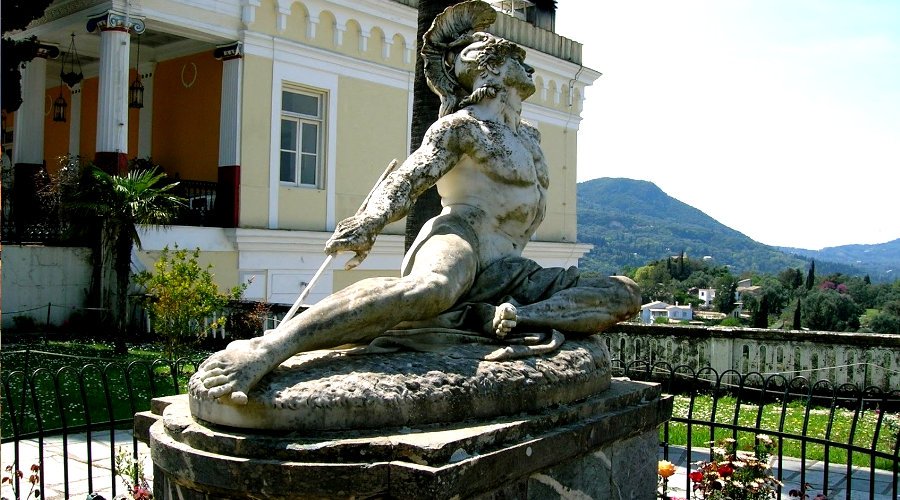6 h. tour (Private tour)
(transportation + guidance throughout + visit Kanoni + visit the Achillion Palace + visit the Theotoky Estate winery + free time in Corfu old town)
Departing from Corfu’s port, you will drive to Kanoni, from where you can enjoy the excellent views of the picturesque Mouse Island and Vlacherna Convent which is linked to the mainland by a causeway. Mouse Island was formed, according to legend, when the ship of Odysseus that took him back to his homeland Ithaca, was turned to stone. The god of the sea Poseidon was angry at Phaeceans because they defied him.
Then you will drive to the village of Gastouri and visit the Achillion Palace, which was built at the end of the 19th century by the Empress Elizabeth of Austria (known as Sissy) on land bought during a visit to Corfu. This large neoclassical building has three floors adorned with many statues and paintings and is surrounded by vast gardens that are decorated with many statues, the most famous of which are the two bronze runners, the dying Achilles and the statue of Achilles Triumphant. After the assassination of Empress Elizabeth, Kaiser Wilhelm II of Germany bought the palace and used it as a place for relaxation. All of the rooms contain personal items of the former owners and their original furniture.
After the visit of Achillion, you will drive to a famous winery of Corfu, the Theotoky Estate. There you will enjoy a tour of the winery and have a chance to taste some of the most famous wines of Corfu.
You will then return to Corfu Town with its unique architecture influenced by Venetian, French and British occupation. You will see impressive buildings such as the Old and New Fortresses as well as the Palace of Saint Michael & Saint George which now houses an impressive Museum of Asiatic Art. The Liston is Corfu Town's most traditional meeting place, where people gather to read newspapers and drink coffee or ouzo at the old-established cafes. Its terrace, with a series of arches fronting the road, is based on the Rue de Rivoli in Paris and was designed by the French in the early 19th century. It forms the western side of the Esplanade, which is the largest square in southern Europe.


